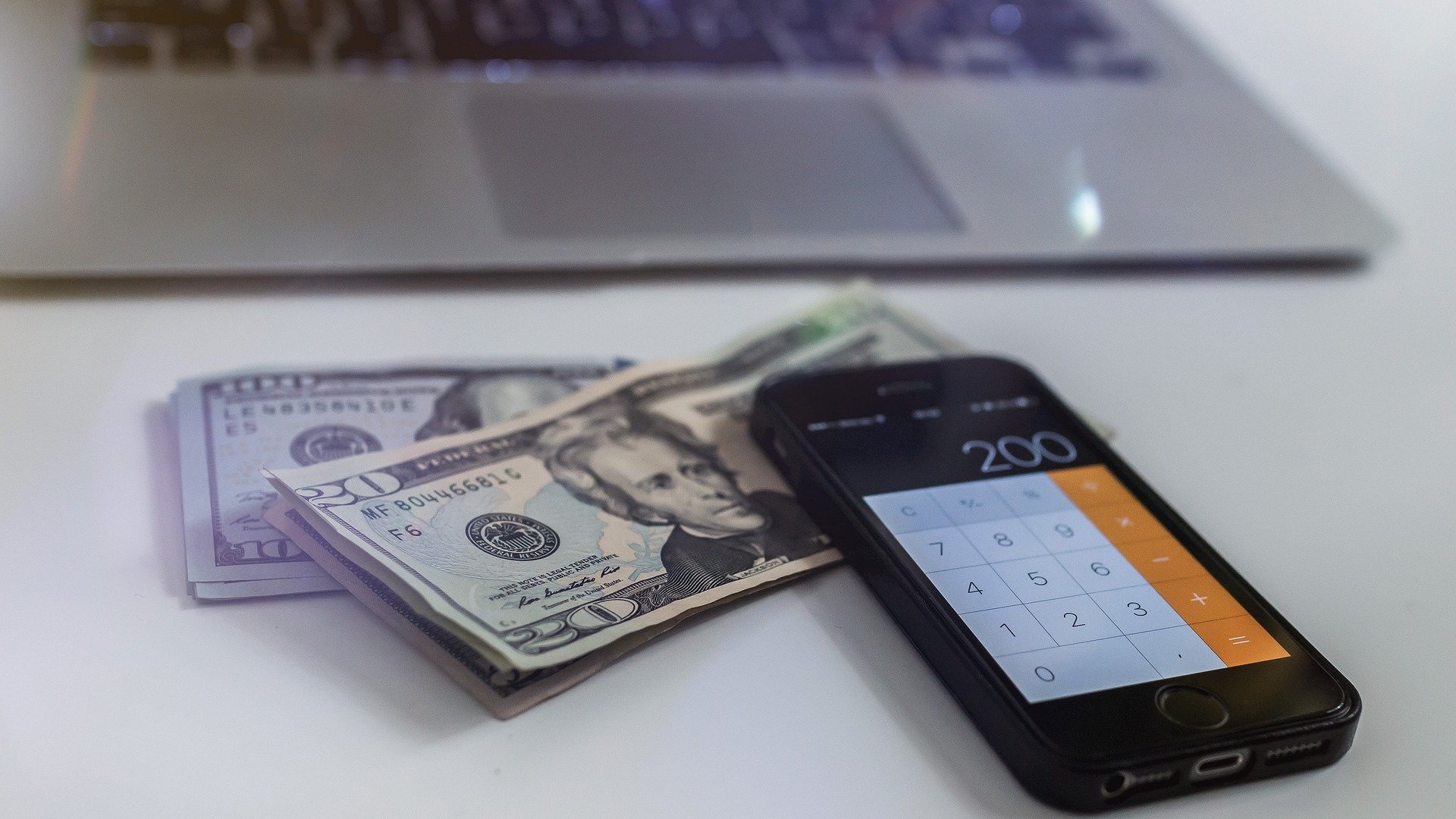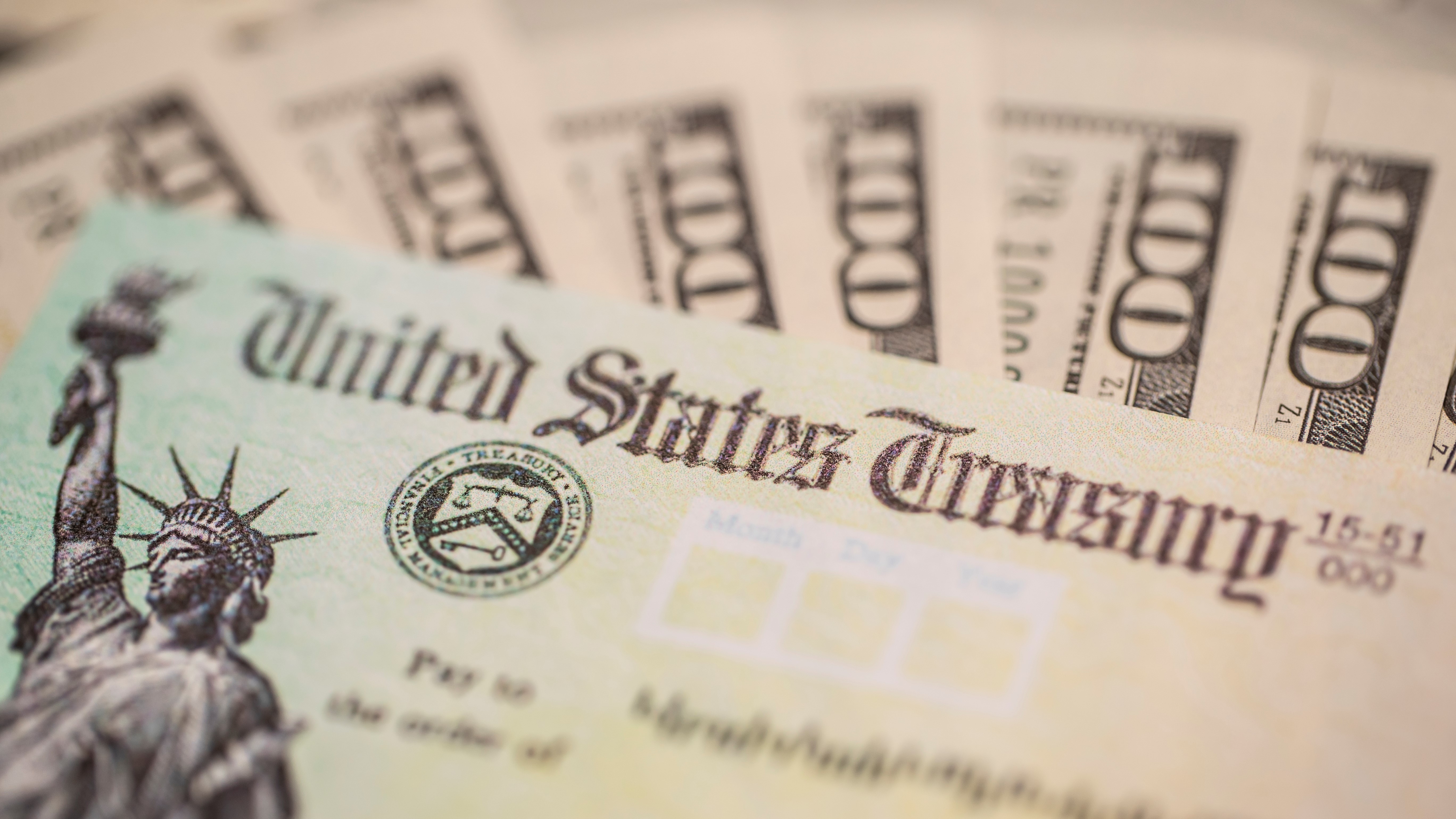Third stimulus check update: Additional plus-up payment roll out begins
The IRS confirms that 1 million supplemental payments worth on average $2,000 have been sent to those underpaid on stimulus check 3, and that more will follow.

The IRS says it has sent over 1 million “plus-up” payments to American taxpayers that it has determined were underpaid on their third stimulus check. The agency added that more of these supplemental payments - which should not be confused with a fourth stimulus check - will be sent over the coming weeks, as and when it becomes apparent that people are owed more under stimulus check 3.
With the distribution of the third stimulus check falling within the tax season, some will have received stimulus check 3 payments based on their 2019 tax returns but could actually be eligible for a larger payment - or one that they weren't entitled to before - if they’ve recently filed a 2020 tax return, and their circumstances have changed.
Examples of when you might be owed more include if your income fell year-over-year, either due to unemployment or reduced hours, or if you had a new child. The stimulus plus-up payments are effectively putting any such wrongs right, and in totaling more than $2 billion to date, it means the average payment so far has been around $2,000 - a huge incentive for people to fire up their tax software if they haven’t done so already.
Delayed Social Security payments also confirmed
At the same time, the IRS confirmed that around 25 million Social Security recipients should soon find that the third stimulus check has now landed in their bank accounts.
Despite the distribution of stimulus check 3 starting mid-March, payments to around 30 million Americans in receipt of Social Security, Supplemental Security Income and Railroad Retirement benefits had been delayed after the Social Security Administration failed to share payment information with the IRS.

Now, however, the agency says that more than 19 million payments, with a total value of $26 billion, have been sent to Social Security beneficiaries, including Social Security retirement, survivor or disability (SSDI) beneficiaries, who didn’t file a 2020 or 2019 tax return and didn’t use the Non-Filers tool last year. A further 3 million payments have been sent to Supplemental Security Income (SSI) beneficiaries, and almost 85,000 payments to Railroad Retirement Board (RRB) beneficiaries.
The roll out of third stimulus checks to Veterans Affairs (VA) beneficiaries has also begun, with veterans and their beneficiaries who receive Compensation and Pension benefit payments, but who don’t normally file a return, being told funds should be in their accounts on April 14.
Sign up to receive the latest news, reviews, buying guides and deals direct to your inbox
The latest dispatch also includes another 1 million payments for those whom the IRS did not previously hold the details it requires to issue a check, but who have now filed a return and are eligible for the relief payment.
Who has been affected by the delay?
The IRS said that many federal beneficiaries who have filed a 2019 or 2020 tax return, or used its Non-Filers tool last year, should already have seen their third stimulus check distributed.
Those affected by the delay were specifically Social Security retirement, survivor or disability (SSDI), Supplemental Security Income (SSI), and Railroad Retirement Board (RRB) beneficiaries who have not filed a return for either of the past two years or used the Non-Filers tool. Those in receipt of VA benefits and who do not regularly file tax returns were told they may have to wait until mid-April before their stimulus checks start to be disbursed.
What should social security recipients do?
Most Social Security retirement and disability beneficiaries, railroad retirees and recipients of veterans benefits who qualify for a stimulus payment should not need to take any action in order to secure their relief payment, which will generally be paid in the same way that they receive their regular benefits.
However, some federal benefit recipients have been told they may need to file a 2020 tax return, even if they don't usually file, to ensure the IRS has the information it needs to deliver the necessary payments for any qualified dependent.
What we know about stimulus check 3
Stimulus check 3 is the biggest direct payment so far, with eligible individuals receiving up to $1,400, and all dependents receiving $1,400 this time around too. For the original stimulus payment and stimulus check 2, the lower additional sums of $500 and $600 were awarded to dependents respectively, and only for children age 16 or under. This meant households with older children, who were age 23 or younger and at college, or with elderly parents living with them, didn’t receive the extra funds - but they will this time.
In line with the checks that have gone before, individuals with incomes up to $75,000 a year, heads of household earning up to $112,500, and joint-filers bringing home up to $150,000 combined will qualify for the full payment. This time, however, as we've already mentioned, adult dependents will be eligible for the money, along with mixed status households too.
Where a change has been made is in the rate at which the third round of payments will begin to phase out - as a result, individuals who earn over $80,000 a year, heads of household at $120,000, and married couples with a joint income in excess of $160,000 won't be receiving any payment.

Make sure you receive the third stimulus check
One difference to the stimulus checks that have gone before is that the third round is being delivered in the midst of a tax season. As eligibility for the third payment, and the amount that people can expect to receive, will be determined using the most recent tax return processed by the IRS, taxpayers are being urged to file returns online as early as possible to make sure the stimulus check they receive will reflect their current situation.
The need to employ the latest tax software quickly is made even more urgent if people have experienced significant changes in their lives within the last year, including job loss, a reduction in income, or the birth of a new child.
For those who are yet to file a 2020 tax return - the deadline for which has been extended to May 17 - the IRS will probably use their 2019 return to work out their third stimulus payment. However, if this doesn’t reflect the lower income they are now receiving or new children, they may miss out on some or all of the money for which they are eligible. For anyone wondering, stimulus checks are not taxable as income.
With regard to those who don’t usually file taxes, the advice is to file Form 1040 or Form 1040-SR, so that the IRS can assess eligibility and will know where to send stimulus payments - this will also allow the service to calculate whether people are due the Recovery Rebate Credit, which ensures people receive all of the money that they are owed from the first two stimulus checks. Anyone with income under $72,000 can file a Federal return at no cost via the IRS Free File program.
When will the third stimulus check arrive?
As soon as stimulus check 3 was signed into law, it was all systems go at the IRS for delivering the payments to the American people. Policymakers had been keen to pass the bill before March 14, when expanded unemployment benefits were due to expire, and this informal deadline has been met.
For the second round of stimulus payments, the IRS began distributing payments just three days after then-President Donald Trump put his signature to the necessary paperwork, and a similar turnaround time has been achieved again.

"Since the Treasury Department - Department of Treasury and the IRS are working hard to get relief payments out the door as fast as possible to the American people, people can expect to start seeing direct deposits hit their back accounts as early as this weekend [March 13-14]," said Press Secretary Jen Psaki. "This is, of course, just the first wave. And payments to eligible Americans will continue throughout the course of the next several weeks."
Those who have received past stimulus checks by direct deposit are more likely to receive their third payment quickly because the IRS will already have their account details on record. Given the additional time needed to print physical stimulus checks and arrange pre-paid debit cards, and the time spent in the mail, anyone expecting their payment by these methods will probably be waiting longer.
"Because these payments are automatic for most eligible people, contacting either financial institutions or the IRS on payment timing will not speed up their arrival," the IRS added. "Social Security and other federal beneficiaries will generally receive this third payment the same way as their regular benefits. A payment date for this group will be announced shortly."
President Biden pledged previously to make it easier for Americans to receive their payment, with the IRS being tasked to create additional online tools and “simple options” to help people through the process. With the experience of delivering two previous stimulus payments to draw upon, the IRS seems in a good position to turn around the vast majority of payments within a short period.
How many stimulus payments have been sent?
The IRS confirmed last week that over 127 million Americans are already in receipt of the third stimulus check, meaning more than $325 billion in relief funds is now sitting with households across the US, waiting to be put to good use.
For those finding it difficult to pay the rent, their mortgage or everyday bills, the delivery of the third stimulus check couldn't have come too soon, while for others the windfall could deter the need to borrow on credit cards, personal loans or even payday loans, and allow existing debtors to pay back what they owe.
The first batch of payments were mostly received by eligible taxpayers who provided direct deposit information on their 2019 or 2020 tax returns, including people who don't usually file a return but used the Non-Filers tool on IRS.gov last year. While most of these early payments were delivered by direct deposit into online bank accounts, the Treasury confirmed it had also mailed roughly 150,000 paper checks worth approximately $442 million, which Americans can expect to receive soon, if they haven't already.

The IRS added that over 37 million people have received their third stimulus check via the "Get My Payment" tool on its website, and reassured those still waiting that payments will continue to be sent over the coming weeks via direct deposit and through the mail as a check or debit card. Most people will receive their payment automatically and usually via the same route that they received the first and second round of relief payments last year.
"The payments will be delivered automatically to taxpayers even as the IRS continues delivering regular tax refunds," said IRS Commissioner Chuck Rettig. "We urge people to visit IRS.gov for the latest details on the stimulus payments, other new tax law provisions and tax season updates."
Third stimulus check paper checks, debit cards
A large number of paper checks and prepaid debit cards are currently being sent in the mail. Anyone who did not receive their third stimulus check by direct deposit by March 24 has been advised by the Internal Revenue Service (IRS) to watch the mail carefully in the coming weeks.
Paper checks will arrive in a white envelope from the U.S. Department of the Treasury, with taxpayers who receive their tax refund by mail being advised that the stimulus check mailed out will look similar, but will be labeled as an "Economic Impact Payment" in the memo field instead.
Prepaid debit cards will also be sent in a white envelope prominently displaying the seal of the U.S. Department of the Treasury. The card itself will have the Visa name on the front and the issuing bank, MetaBank, N.A. on the back. Information included with the card will explain that this is an Economic Impact Payment (EIP).
Will you receive your stimulus check by mail?
The IRS has told taxpayers the payment method by which they receive the third stimulus check could be different to how they received earlier stimulus payments. More people will receive their money by direct deposit this time around, in particular because the tax season is in full swing and the IRS now has the bank details of more Americans on file to allow payment to be made this way.
Equally, those who received a paper check last time out could receive a prepaid card this time around, and vice versa. However, if the IRS has your direct deposit information on file, or can use federal records of recent payments to or from the government, then the money should land direct in your bank account rather than by mail. If the direct deposit details on file relate to a closed bank account, the payment will be reissued by mail to the address on file with the IRS.
Who gets a paper check and who gets a prepaid debit card is not decided by the IRS.

How to use the stimulus check prepaid card
For the third stimulus checks that are being distributed by prepaid debit card, each mailing will include instructions on how to securely activate and use the card. A website has also been set up with further guidance.
To get started, you'll need to:
- Read the Cardholder Agreement and Fee Schedule
- Activate your EIP Card account, set your 4-digit PIN and get your balance by calling 1.800.240.8100
- Sign the back of your EIP Card
- Keep your EIP Card in a safe place.
The EIP prepaid debit card can then be used anywhere that Visa Debit Cards are accepted in-store, online or by phone, including to pay bills. It can also be used to get cash back at the register with PIN debit purchases at participating merchants, and to withdraw cash surcharge-free at any in-network ATM. Funds can also be transferred to a personal bank account, and the balance remaining checked online, through a mobile app, or by phone.
The prepaid debit card provides consumer protections against fraud, loss, and other errors, and it's possible to obtain a replacement card, if needed, without incurring any fees. Importantly, however, none of the EIP cards issued for any of the three stimulus payments are reloadable, and so can't be added to with extra funds once the funds have been spent.
With over 20 years’ experience in the financial services industry, Tim has spent most of his career working for a financial data firm, where he was Online Editor of the consumer-facing Moneyfacts site, and regularly penned articles for the financial advice publication Investment Life and Pensions Moneyfacts. As a result, he has an excellent knowledge of almost areas of personal finance and, in particular, the retirement, investment, protection, mortgage and savings sectors.

